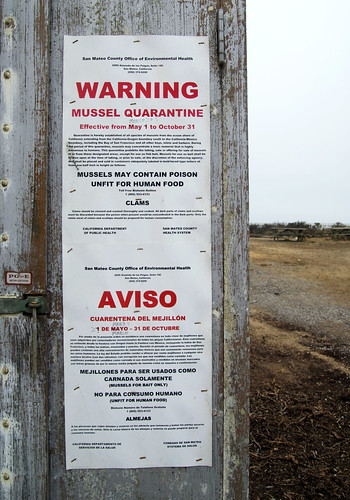“The world is not your private garbage can!”-Barbara Smith (My Mom), Chief of Litter Police.
It was last Fall and my Mom and I arrived at a favorite mushroom hunting patch on the North Coast armed with baskets and optimism. We were early in the season so we knew to expect not to see a full fledged fungi explosion, but we were confident that we could find some tasty morsels in the tan oak and Douglas fir leaf litter.
The cool misty air was welcoming and our footsteps were silent on the moist ground. We joked and laughed as we walked, stopping now and then to pick a few hedgehogs and winter chantrelles. After some time we spied an alder log next to a little brook about 100ft below us in a shady wooded canyon. Slipping and sliding down the muddy deer trail to the banks of the spring, we could tell that the fungi on the log that we had seen from afar were indeed oyster mushrooms. I had passed these up year after year until recently when my Brother introduced them to me. Now I couldn’t seem to get enough of their subtle flavor and delicate texture. My Mom and I stooped over the log and cut only the freshest of the bounty for our baskets. Taking a moment to breath the fresh forest air, we marveled at the beams of sunlight filtering in through the canopy, and the sound of the sweet melody coming from the cascading riffles of the babbling brook. It was a nice moment to reflect on just why we love these wild places so much.
Almost back to the car we came upon a pile of empty bottles and some trash. My Mom shook her head in disapproval and suggested we consolidate our mushrooms into one basket and fill the other with this physical manifestation of lazy selfishness. We did so, bringing natural beauty back to this space in the forest, and I was reminded of some other times…
Recently I was working in a beautiful National Park as part of an ecological restoration project. On the trail to the work site I came across a Nature Valley granola bar wrapper wedged in the crotch of a tree. “Sure,” I said aloud wishing the litterbug was still here, “come to Nature Valley, enjoy the pristine beauty and leave your crap behind!” I am truly baffled by the lack of respect some have for the natural world around them. I guess it must just boil down to how they were raised.
On another recent trip, a group of us were being interviewed on a video depicting our “unique connection with nature.” The cinematographer had given us some plastic water bottles as we got out of the ocean with our fish. Once the camera was ready to film, the cinematographer realized the labels on the bottles would distract viewers from the fish and crustaceans we were describing. She peeled off the labels, got back in position and casually threw them on the sand, which promptly blew down the beach in the wind. I walked out of the frame which made her scowl, grabbed the labels, walked back over and put them in her hand. With a serious tone that implied she ought to know better, I said “I think you dropped these.” She realized the error in her judgement though she was a bit too embarrassed to say anything before we finally got the shot.
Years back (this is my favorite litter-related story and clearly where I get my leave-no-trace-behind mentality) my Mom and I were driving home through the orchards and vineyards. A car full of teens sped down this country road ahead of us throwing burger wrappers, cups, and bags out of their window for at least a mile. My Mom’s blood was boiling! They stopped at a driveway a mere half mile from our house and my Mom followed. Stopping the car, she rolled down the window, hung her head out and hollered. “I’ve watched you throwing trash out the window the whole way here. This is my road! The world is not your private garbage can! I have your license plate number and I will be back down this road in 10 minutes. I better not see a single piece of garbage, or I’m calling the cops!” The teens shrank until nearly disappearing before our eyes. 10 minutes later, the whole road was immaculately clean!
Massive respect to all the spearfishing clubs, beach stewards, etc. who organize events aimed at picking up after the lazy and ignorant and leave the natural world just a little cleaner than they found it! Go beyond the title of this post. Don’t just tread lightly, lead by example!Pick up that trash even if you weren’t the one who left it there. Others will see and think twice, or follow in your footsteps. Make your kids do their own dishes and clean their own rooms. I hated doing it as a kid, but I am very grateful for that now as it certainly made me think twice about what I was dropping on the ground. To all those who say we should send spacecrafts out to find a new planet because we’re trashing this one…I say, STOP TRASHING IT! I like our Earth, so do you, so lets work together so our grandchildren will too! Keep it clean, be green, forage locally, think globally, battle the insanity by living sensibly, value sustainability, help make a better tomorrow, today’s reality! Keep the old ways alive!

































